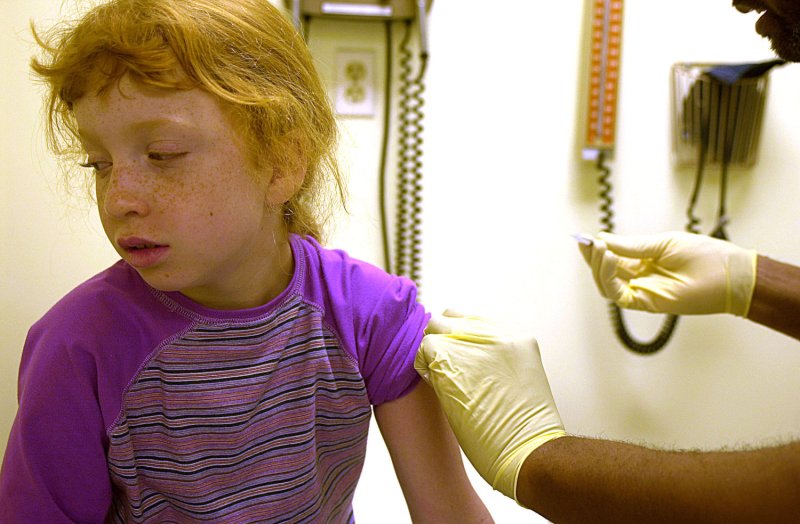20-year immunization program spares millions of U.S. children from disease. (UPI Photo/ Arianne Starnes) |
License Photo
ATLANTA, April 24 (UPI) -- For U.S. children born in the last 20 years, vaccinations will prevent more than 21 million hospitalizations and 732,000 deaths from diseases such as measles, mumps, rubella, polio, tetanus, diphtheria and pertussis or whooping cough.
Tom Frieden, director of the Centers for Disease Control and Prevention in Atlanta, said the Vaccines for Children program created by the Omnibus Budget Reconciliation Act of 1993 and implemented in 1994 was designed to ensure that eligible children do not contract vaccine-preventable diseases due to their parents' inability to pay.
The program was created in response to a resurgence of more than 55,000 cases of measles in the United States during 1989 to 1991 even though the measles vaccine has been available since 1963.
A report in the CDC's Morbidity and Mortality Weekly Report found 20 years’ worth of vaccines given to U.S. children born between 1994 and 2013 over their entire lifetime averted $402 billion in direct costs and $1.5 trillion in societal costs.
"After accounting for $107 billion in direct costs and $121 billion in societal costs of routine childhood immunization, the net present value -- net savings -- of routine childhood immunization from the payers' and societal perspectives were $295 billion and $1.38 trillion, respectively," the report said.
"Thanks to the VFC program, children in our country are no longer at significant risk from diseases that once killed thousands each year,” Frieden said in a statement.
Approximately 50 percent of U.S. children and teens age 19 and younger are eligible to receive vaccines via the VFC program and receive vaccines if they are Medicaid-eligible, uninsured, American Indian/Alaska Native, or, for those whose health insurance does not fully cover immunizations, when they are receive medical care at a federally qualified health center or rural health clinic.
“Current outbreaks of measles in the U.S. serve as a reminder that these diseases are only a plane ride away. Borders can’t stop measles, but vaccination can.”
Despite a high level of U.S. immunization against measles, 129 people were reported to have measles this year in 13 outbreaks, as of April 18, Frieden said.















